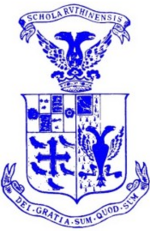Llanfair Dyffryn Clwyd
Grade II* listed buildings in DenbighshireGrade II listed buildings in DenbighshireRegistered historic parks and gardens in DenbighshireVillages in Denbighshire

Llanfair Dyffryn Clwyd is a village and community in Denbighshire, Wales, situated in the Vale of Clwyd about one mile south of the town of Ruthin. In the 2001 census, it had 1048 residents and 50.6% of them could speak Welsh. The figures for the 2011 census were: population 1,053; Welsh speakers 46.9%. The age group with the highest percentage of Welsh speakers was the 15-year-olds, all of whom could speak it. The villages of Pentrecelyn and Graig Fechan are located in the community.
Excerpt from the Wikipedia article Llanfair Dyffryn Clwyd (License: CC BY-SA 3.0, Authors, Images).Llanfair Dyffryn Clwyd
Wrexham Road,
Geographical coordinates (GPS) Address Nearby Places Show on map
Geographical coordinates (GPS)
| Latitude | Longitude |
|---|---|
| N 53.089 ° | E -3.294 ° |
Address
Wrexham Road
LL15 2RT , Llanfair Dyffryn Clwyd
Wales, United Kingdom
Open on Google Maps








